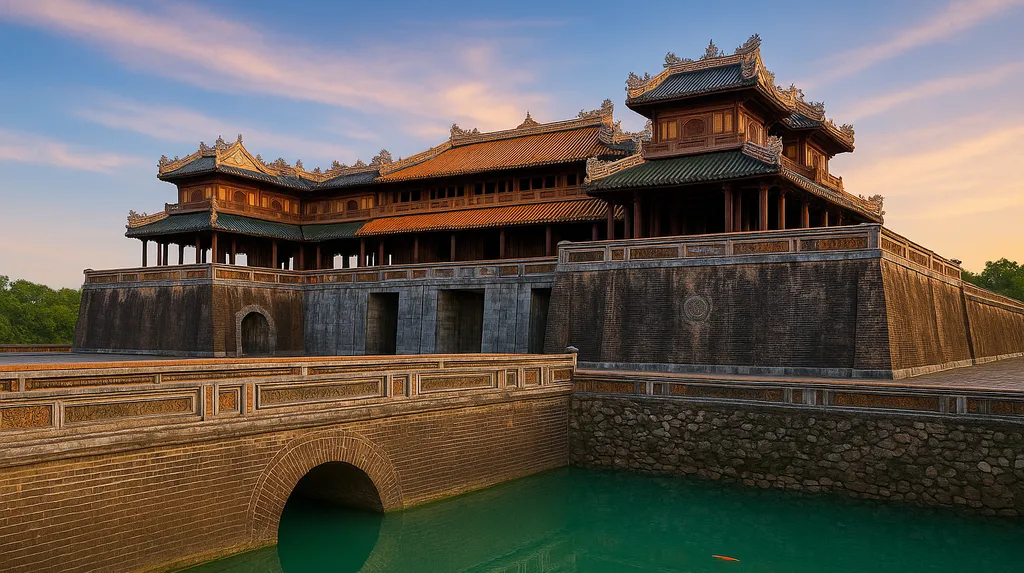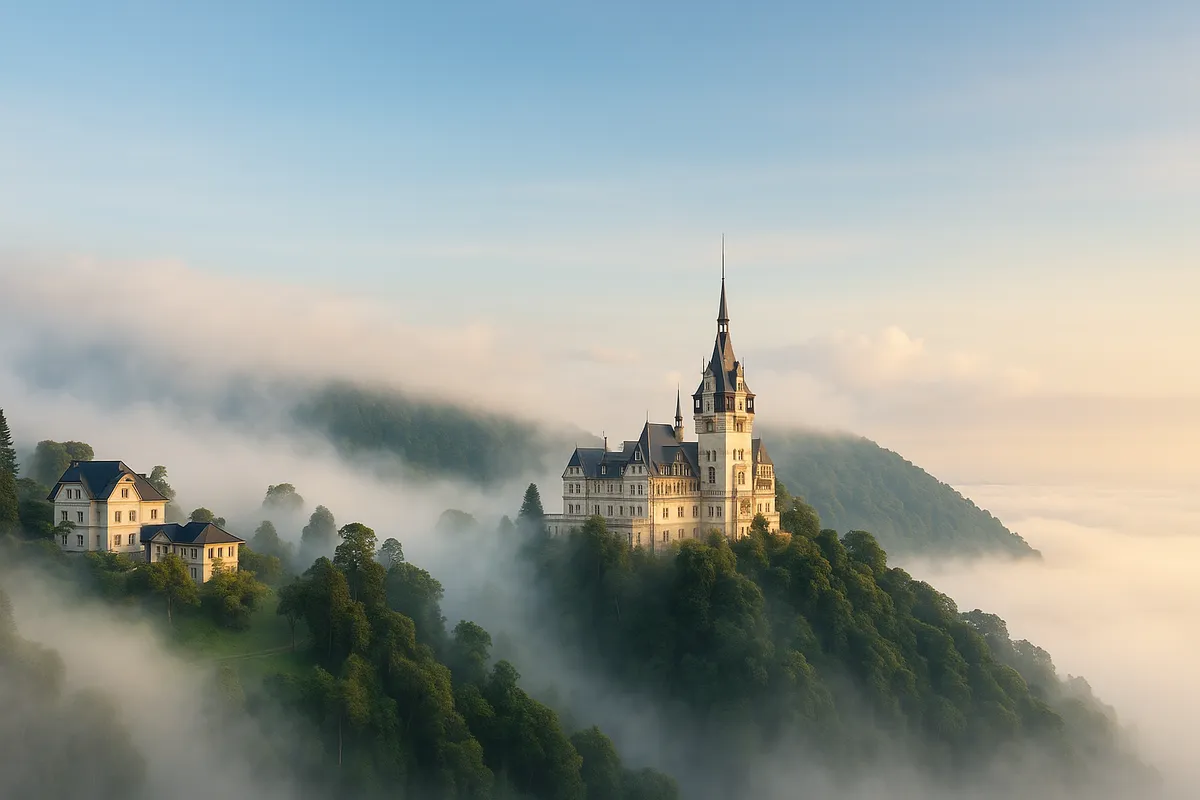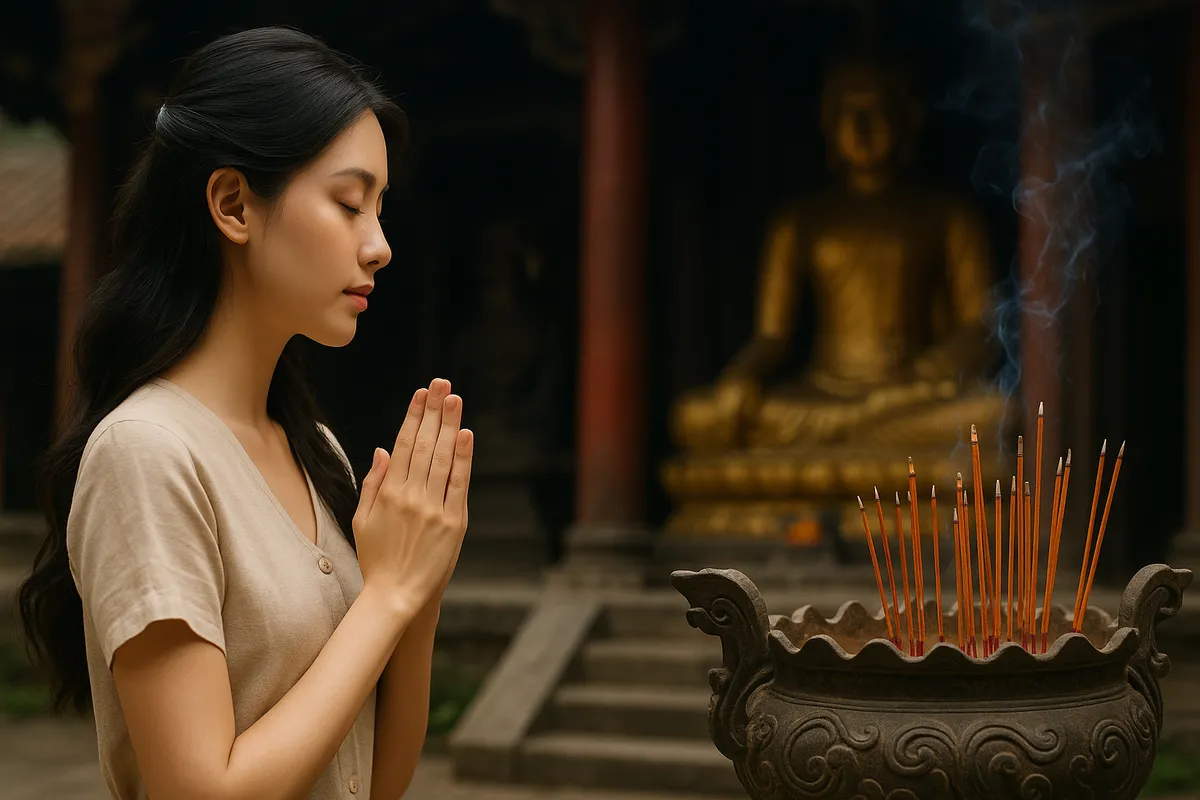A journey into the mystical world of Hue ancient capital
- Friday, Apr 18, 2025, 10:40 (GMT+7)
A journey into the mystical world of Hue ancient capital
If every land were a book, then Hue would be a memoir—inked in shadows and sunlight, every page steeped in time, every line echoing the spirit of a bygone dynasty. In the heart of this poetic city lies the Complex of Hue Monuments, recognized by UNESCO as a World Cultural Heritage site since 1993. But more than stone and wood, it preserves an entire ethos—the pride, the silence, the soul—of the Nguyen Dynasty, which quietly stepped behind the curtain of history but never truly faded away.
To step into Hue is to cross into another world. Time slows. The chime of temple bells drifts over the Perfume River like whispers from the past. The moss-covered walls of the Imperial City murmur stories without needing words. The Complex of Hue Monuments is not just a heritage site—it is a closed universe of mystery, where every brick, every tiled roof, every gate carries a mission: to safeguard memory, to retell history, and to leave open the questions history never fully answers.
The Hue Citadel, the beating heart of the entire complex, stretches out with its grand moats, colossal gates, and stone-paved paths once walked by emperors and mandarins. Thai Hoa Palace rises like a preserved miracle, with its glimmering yellow-glazed tiles and eighty lacquered ironwood columns etched with golden dragons. The throne at the center sits untouched, empty yet overwhelming, as if the authority it once symbolized still lingers in the air. Here, great court rituals were held, vows of loyalty were declared, and silent beads of sweat glistened during scorching summer councils. Those echoes have not vanished; they float, quietly woven into the atmosphere.
Wandering the ancient corridors, one encounters the Forbidden Purple City, a realm unto itself—serene, secluded, and veiled. Its red-brick walls, dark wooden frames, and dragon-cloud motifs form layers of time like drawn curtains, hiding the imperial private life that the future can only imagine. At the core of it all, Hien Lam Pavilion stands like a sacred stairway to the heavens, commemorating royal merit while humbly observing the rule that no structure shall rise higher than the Noon Gate—the supreme portal to imperial authority.
But perhaps what sets Hue apart from all other royal capitals lies in how the Nguyen kings conversed with death. They didn’t leave their resting places to chance. They designed them during their lifetimes—as acts of preparation, acceptance, and quiet dignity in the face of impermanence. The tomb of Emperor Minh Mang unfolds with a perfect harmony between man and nature, embodying the Eastern philosophy of Heaven – Earth – Man. The boundaries between the natural and the constructed blur to the point where one forgets they ever existed. In contrast, Tu Duc’s tomb is a sorrowful poem rendered in stone and water—a mirror of the poetic soul of an emperor who poured his loneliness, broken dreams, and love of beauty into every pond, pine, and poem carved into rock. Each stone seems to whisper melancholy, and yet, in its sadness, there is a gentle grace.
Then comes Khai Dinh’s tomb—a world unlike any other. Here, Eastern mystique meets Western opulence in a surreal, almost rebellious symphony. The stairs leading to the tomb pull you into an alternate realm, where interiors sparkle with porcelain, glass, and even fragments of eggshells—an overwhelming display of intricate artistry. The ceiling of Thien Dinh Palace, painted entirely by hand in reverse technique, retains its color and vibrancy to this day, an achievement many believe would be difficult to replicate even with modern tools. These are not merely decorative works—they are metaphors for transformation, for the evolution of a dynasty as it faced the brink of change.
Leaving the palaces and tombs behind, one is often drawn to Thien Mu Pagoda—perched quietly beside the Perfume River like a comb gently brushing through the tangled thoughts of wandering souls. Few know that this pagoda was born from a prophecy, a vision of a lady in red, and a dream woven into the folklore of Vietnam. The towering Phuoc Duyen Tower, once printed on old Vietnamese banknotes, still stands silently—guarding, welcoming, inviting those in search of a spiritual anchor.
As sunset softens the worn stone of an ancient tomb, you might find yourself pausing before a carved elephant statue. It is not just sculpture—it is character. Each elephant, each guardian figure, bears unique features. The artisans of old didn’t carve stone as a task—they communed with it, whispered to it, left part of their soul in every groove. It is in these smallest details—meticulous, deliberate—that Hue reveals its essence: not just grand in scale, but in spirit, like someone lovingly preparing their final meal on Earth.
And then, there are those moments that bypass words and speak directly to the senses. Like standing beneath the round window of Hien Lam Pavilion as the morning light streams through, casting a soft glow on mossy walls. The light does not boast. It does not shout. It simply illuminates enough to awaken something deep and ineffable—an unexpected connection to the souls who once passed here. Hue does not tell stories aloud; it lets the space, the silence, and the light do the talking.
The Complex of Hue Monuments is not a place for sightseeing or collecting selfies. It demands something deeper: a quiet presence, an open heart, a still step. People do not come here to consume history—they come to be touched by it. Each breeze, each birdcall at dawn, each ray of sun dancing on the ancient tiles—all blend into a voiceless symphony, guiding us back to a lost time. There is no rush. There is only the immersive presence of the past, so vivid you can almost feel it breathing.
And when you leave Hue, you don’t just take home photographs or souvenirs. You carry something unnamed—a lingering sensation, as if you’ve just shared an intimate conversation with history itself. As if a piece of ancient Vietnam quietly embedded itself in your heart. And from that moment on, whenever someone mentions the name Hue, your pulse softens, your vision blurs just slightly with memories that are not yours, yet feel undeniably real, profoundly close, and beautifully timeless.

 CHECKIN.VN
CHECKIN.VN








Share on